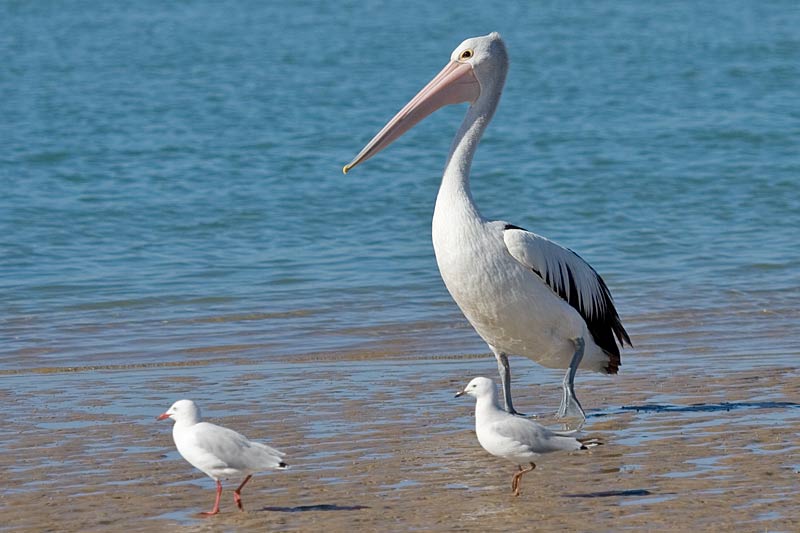Australian Pelican Biography








The Australian Pelican is often seen around the coasts, where it can be seen roosting on sandbanks, rock platforms and reefs, or swimming in lagoons, bays and estuarine waters, dipping their oversized bills into the water to catch fish. However, on the rare occasions that monsoonal rains flood the salt lakes in the arid inland of Australia
There are seven species of pelicans in the world, all of which are similar in shape and, with one exception, are primarily white in colour. Males are larger than females. The most characteristic feature of pelicans is the elongated bill with its massive throat pouch. The Australian Pelican's bill is 40 cm - 50 cm long and is larger in males than females. Pelicans have large wings and a wingspan of 2.3 m - 2.5 m.
The Australian Pelican is found throughout Australia , Papua New Guinea and western Indonesia , with occasional reports in New Zealand
The bill and pouch of pelicans play an important role in feeding. The bill is sensitive and this helps locate fish in murky water. It also has a hook at the end of the upper mandible, probably for gripping slippery food items. When food is caught, the pelican manipulates it in its bill until the prey typically has its head pointing down the pelican's throat. Then with a jerk of the head the pelican swallows the prey. The bill is delicately built. The lower jaw consists of two thin and weakly articulated bones from which the pouch hangs. When fully extended, the bill can hold up to 13 litres. The pouch does not function as a place to hold food for any length of time. Instead it serves as a short-term collecting organ. Pelicans plunge their bills into the water, using their pouches as nets. Once something is caught, a pelican draws its pouch to its breast. This empties the water and allows the bird to manoeuvre the prey into a swallowing position. The pouch can also serve as a net to catch food thrown by humans, and there are sightings of pelicans drinking by opening their bill to collect rainwater.
Breeding depends on environmental conditions, particularly rainfall. Pelicans are colonial breeders with up to 40 000 individuals grouping on islands or secluded shores. Breeding begins with courtship. The female leads potential mates (two to eight or more) around the colony. As the males follow her in these walks, they threaten each other while swinging their open bills from side to side trying to attract the female's attention. The males may also pick up small objects, like sticks or dry fish, which they toss in the air and catch again, repeating the sequence several times.
Australian Pelican

Australian Pelican

Australian Pelican

Australian Pelican

Australian Pelican

Australian Pelican

Australian Pelican

Australian Pelican

Australian Pelican
Australian Pelican close up on Kangroo island
Australische pelikan-Australian Pelican
No comments:
Post a Comment